History
The Brauns formed the Negatones in 1997 following stints playing local shows and touring internationally in several other NYC bands. Former high school classmate Jun Takeshta moved from Tokyo to New York City to join the Negatones after receiving a demo tape from the Brauns in the mail.
A noted anomaly amongst the Music of New York City, they have remained largely independent and defiant of local band trends yet maintain a loyal following, receive substantial broadcasts (both radio and podcasts) and enjoy regular press mention ranging from Spin Magazine and The Village Voice to a front-page feature in The New York Times. The final episode of Dr. Katz features an animated thug wearing a Negatones T-shirt.

The music of New York City is a diverse and important field in the world of music. It has long been a thriving home for popular genres such as jazz, rock, and the blues, as well as classical and art music. It is the birthplace of hip hop, Latin freestyle, doo wop, bebop, disco, punk rock, and new wave. It's also the birthplace of salsa music, born from a fusion of Cuban and Puerto Rican influences that came together in New York's Latino neighborhoods in the 1960s. The city's culture, a melting pot of nations from around the world, has produced vital folk music scenes such as Irish-American music and Jewish klezmer. Beginning with the rise of popular sheet music in the early 20th century, New York's Broadway musical theater, and Tin Pan Alley's songcraft, New York has been a major part of the American music industry.

The Village Voice was an American news and culture paper, known for being the country's first alternative newsweekly. Founded in 1955 by Dan Wolf, Ed Fancher, John Wilcock, and Norman Mailer, the Voice began as a platform for the creative community of New York City. It still is kept alive online.

The New York Times is an American newspaper based in New York City with worldwide influence and readership. Founded in 1851, the paper has won 125 Pulitzer Prizes, more than any other newspaper. The Times is ranked 17th in the world by circulation and 2nd in the U.S.
After releasing several self-recorded CDs, the Negatones have collectively or individually recorded and/or mixed works for many major label and independent artists and have sporadically toured and/or played with a broad range of local performers including Adam Green, Band of Susans, and Mooney Suzuki. Most recently the Braun brothers were recruited by ex Fiery Furnace Toshi Yano to work on his new project, Kapow. Additionally, the Braun Brothers have also separately worked with Fiery Furnace siblings Matt and Eleanor Friedberger on two covers for Clash and Junior Kimbrough compilations.

Adam Green is an American singer-songwriter, artist and filmmaker.
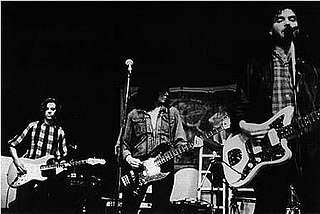
Band of Susans was an American alternative rock band formed in New York City in 1986 and active until 1996. It originally consisted of Robert Poss (guitar/vocals), Susan Stenger (bass/vocals), Ron Spitzer (drums), with Susan Lyall (guitar), Susan Tallman (guitar), and Alva Rogers (vocals). The band would undergo several permutations over the years, usually involving three guitarists. Poss, Stenger, and Spitzer were the band's core members throughout its duration. They originated in the New York noise rock scene, but due to their layered guitar sound were sometimes seen as the American counterparts to the UK shoegazing bands and also drew influence from modern experimental composers Rhys Chatham and Glenn Branca.

The Fiery Furnaces are an American indie rock band, formed in 2000 in Brooklyn, New York. The band's primary members are Matthew and Eleanor Friedberger. The siblings are originally from Oak Park, Illinois, a near-western suburb of Chicago. They are known for their conceptual, highly ambitious releases, which have frequently divided critical opinion.
Avid Rush fans, the Negatone's eponymous debut full-length CD featured cover art by Paul Weldon, who did the cover art for Rush's self-titled debut album 30 years prior. Their new prog approach and staunch longevity despite the tendency for NYC indie bands to gravitate toward fleeting hipster trends has been cited in interviews to make varyingly sarcastic comparisons between the bands.

Rush was a Canadian rock band made up of Geddy Lee, Alex Lifeson (guitars), and Neil Peart. Formed in 1968, the band went through several configurations until arriving at its longest and most popular line-up when Peart replaced original drummer John Rutsey in July 1974, two weeks before the group's first tour of the United States.
Paul Weldon is a Canadian musician and graphic artist from Toronto, Ontario.

The hipster subculture is stereotypically composed of young adults who reside primarily in gentrified neighborhoods. It is broadly associated with indie and alternative music and genres such as chill-out, folk, modern rock, pop rock, and post-Britpop. Hipsters also frequently flaunt a varied non-mainstream fashion sensibility, vintage and thrift store-bought clothing, pacifist and green views, generally vegan, organic and artisanal foods, craft alcoholic beverages, and alternative lifestyles. The subculture typically consists of mostly white young adults living in urban areas. It has been described as a "mutating, trans-Atlantic melting pot of styles, tastes and behavior".

Moog synthesizer may refer to any number of analog synthesizers designed by Robert Moog or manufactured by Moog Music, and is commonly used as a generic term for older-generation analog music synthesizers. The Moog company pioneered the commercial manufacture of modular voltage-controlled analog synthesizer systems in the mid 1960s. The technological development that led to the creation of the Moog synthesizer was the invention of the transistor, which enabled researchers like Moog to build electronic music systems that were considerably smaller, cheaper and far more reliable than earlier vacuum tube-based systems.

Keep It Together is the fourth studio album by the band Guster, released in June 2003. The album was recorded from 2001 to 2003 in Bearsville, New York, New York City, Burbank, California, and Shokan, New York. This is the first album by Guster with Brian Rosenworcel on kit drums instead of hand percussion. Keep It Together went through several working titles, including Bitch Magic, Olympia Dukakis and Come Downstairs & Say Hello.

Pisces, Aquarius, Capricorn & Jones Ltd. is the fourth album by the Monkees, released on November 6, 1967, when the Monkees were exerting more control over their music and had started to play many of the instruments themselves, something their record company had previously forbidden.
Paul Beaver was a jazz musician and a pioneer in popular electronic music, using the Moog synthesizer.

Train is the 1998 self-titled debut album from the band Train. The album was self-produced for $25,000 and three singles from the album were released. The first single released, "Free", was largely a hit on rock stations. The second, "Meet Virginia", peaked at No. 20 on the Billboard Hot 100, and the third single from the album was "I Am". The album has been certified Platinum by the RIAA.

Every Good Boy Deserves Favour is the seventh album by The Moody Blues, released in 1971.
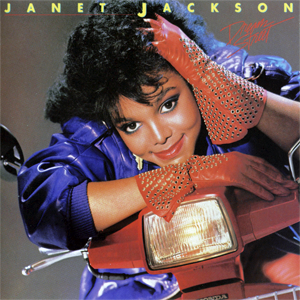
Dream Street is the second album by American musician Janet Jackson, released on October 23, 1984, by A&M Records. More pop than her debut album's "bubblegum soul" feel, the album wasn't the runaway success that Janet's father Joseph thought it would be, peaking at number one hundred forty-seven on the Billboard 200 in 1984. The album did have one modest hit for Jackson, the top ten R&B single, "Don't Stand Another Chance", produced by brother Marlon. Also, the video for the song "Dream Street", her first music video, was shot during the shooting of the TV show Fame.
Circulus are a psychedelic folk/progressive rock band from South London, England, founded by vocalist Michael Tyack.
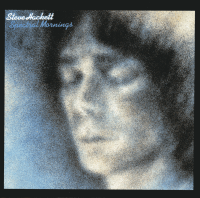
Spectral Mornings is the third studio album by English guitarist and songwriter Steve Hackett, released in May 1979 on Charisma Records. It is his first to feature members of his touring band which many Hackett fans consisting them as the "classic line-up". The musicians are his brother John Hackett, Nick Magnus, Dik Cadbury, John Shearer, and Pete Hicks.
Toshi Yano is an American rock musician, playing bass and keyboard. He was a founding member of the Washington, D.C., hardcore band Battery, the New York hardcore band Violent Bullshit, and of Kapow!, a Brooklyn-based band. Yano also worked as a recording and mixing engineer.
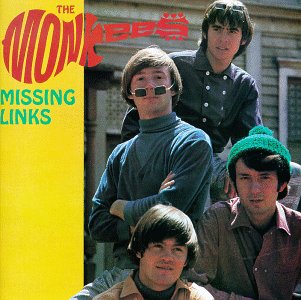
Missing Links is a compilation album of rare and previously unreleased songs by The Monkees, issued by Rhino Records in 1987. It is the first volume of a three-volume set, followed by Missing Links Volume Two in 1990 and Missing Links Volume Three in 1996.

Pocket Symphony is the fourth full-length album by French duo Air. The album was released in March 2007 and features collaborations with Jarvis Cocker and Neil Hannon. Pocket Symphony also incorporates some of the Japanese instruments Godin recently learned to play from an Okinawan master musician: the koto and the three-string, banjo-like shamisen. However, a press release claims that "conventional instruments continue to play a great role" in the duo's music. The album features art by Xavier Veilhan.
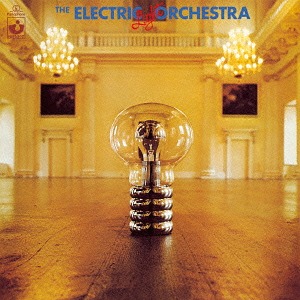
The Electric Light Orchestra is the eponymous debut studio album by English rock band Electric Light Orchestra (ELO), released in December 1971 in the United Kingdom by Harvest Records. In the United States, the album was released in early 1972 as No Answer, after a misunderstood telephone message made by a United Artists Records executive asking about the album name; the caller, having failed to reach the ELO contact, wrote down "no answer" in his notes, and this was misconstrued to be the name of the album.
Rockbot is an American music group from Richmond, Virginia, with a sound self-defined as "Atari rock", combining synth pop, video game sound effects, and heavy metal music. As bassist Jonathan Sullivan, formerly with the group Jack's Mannequin, and guitaris Clark Fraley joined together to form the band, they wished to feature a female singer, and were introduced to New York-based Apollo Smile. Reinforced by Bryan Stiglich on drums, Adam Thomas on Moog synthesizer, and guitarist Steve Burner, Rockbot went on to record debut extended play Joystick in 2002. In 2003, Smile departed the band and was replaced with Kelli Hoosack. That year, they released their first full-length, Atari Rock. In January 2004, Laura Thomas took the vocal role and also added keyboards.
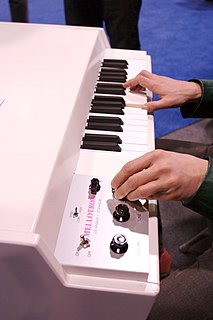
The use of electronic music technology in rock music coincided with the practical availability of electronic musical instruments and the genre's emergence as a distinct style. Rock music has been highly dependent on technological developments, particularly the invention and refinement of the synthesizer, the development of the MIDI digital format and computer technology.
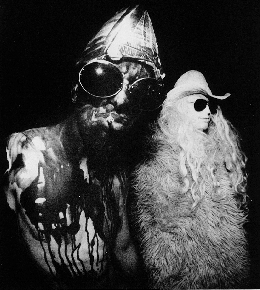
Crash Worship or ADRV was a San Diego based experimental aktionist industrial-noise, multicultural/multidisciplinary performance group formed in 1986, most renowned for its live shows in which three stand-up percussionists hammered out concussive poly-rhythms to abstract mutated guitar, synthesizers, effects and dueling vocalists. Audience members were showered in various substances such as blood, wine and honey while band members ignited combustibles and fire within the performance area. Crash Worship also released several albums and singles of both live and studio-recorded music. Mostly self-produced works in visually stunning screen printed metal splattered with paint, urine, blood and other esoterica. Although they toured playing their recorded material, the celebratory nature of these events left each show open to spontaneity and improvisation.

The Zodiac: Cosmic Sounds was a collaborative concept album on the theme of the signs of the Zodiac. It was issued by Elektra Records in May 1967 and featured early use of the Moog synthesizer by Paul Beaver, with music written by Mort Garson, words by Jacques Wilson, and narration by Cyrus Faryar. It has been variously described as "a wonderful period piece" and "apt to inspire more giggle fits than stoned, pull-the-shades-down reveries"
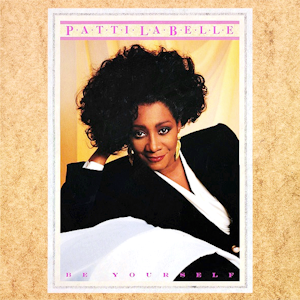
Be Yourself is the ninth solo album by American singer Patti LaBelle, released in 1989 on the MCA label, her second album with the company following 1986's platinum hit, Winner in You. The album features the single, "If You Asked Me To", which is also featured on the soundtrack to the James Bond movie, Licence to Kill, and the top ten Prince-written hit, "Yo Mister". The album marked LaBelle's foray into new jack swing music with the tracks, "I Got It Like That", produced by Full Force and the aforementioned "Yo Mister".

Golden Silence is the second full length studio album by American indie pop band The Narrative, released on December 2, 2016. The album was produced by Bryan Russell and Justin Long at Red Wire Audio in New York. The album is what Suzie Zeldin call more "mature" compared as their last releases. "Chasing a Feeling" was released as the album's lead single on June 3, 2014. The promotional single from the album, "Moving Out" was released on January 12, 2016 followed by "Toe the Line" released on January 27, 2016. On October 28, 2016 the band released the songs "California Sun", followed by "Oklahoma Air" on November 9 and "Reason to Leave" on November 21 promoting the album before its release.

III is the third extended play (EP) by American indie pop band Foster the People, released on April 27, 2017, through Columbia Records. It is composed of three songs that precede the band's third full-length studio album, Sacred Hearts Club.




























